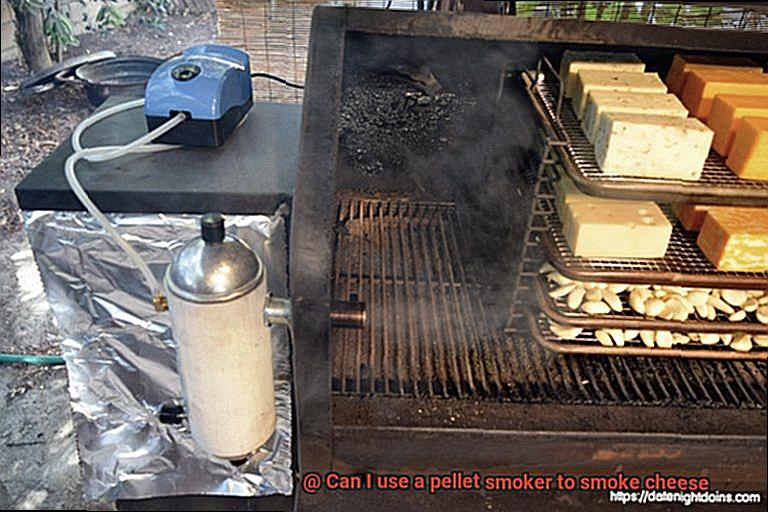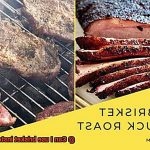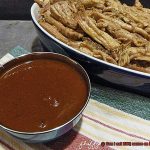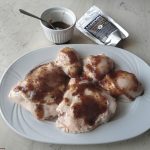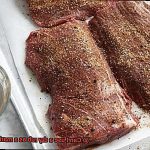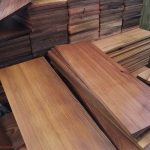Smoked cheese is a delicacy that can add a touch of sophistication to any dish. But if you’re new to the smoking game, you might be wondering if a pellet smoker is up to the task.
Pellet smokers have been gaining popularity in recent years due to their ease of use and consistent temperature control. And the good news is, they can definitely be used for smoking cheese.
In this blog post, we’ll explore the world of smoked cheese and show you how to achieve that perfect flavor with your trusty pellet smoker. We’ll cover everything from choosing the right type of cheese and wood pellets, to nailing down the ideal temperature and time for smoking.
Whether you’re a seasoned pro or just starting out, using a pellet smoker is an excellent way to take your cheese game to the next level. So let’s dive in and learn all about how to smoke cheese with a pellet smoker – your taste buds will thank you.
Contents
What is a Pellet Smoker?
Pellet smokers have become increasingly popular in recent years due to their ease of use and ability to infuse food with a rich, smoky flavor. But what exactly is a pellet smoker, and how does it work?
A pellet smoker is a type of grill that uses wood pellets as its fuel source. These pellets are made of compressed sawdust and come in a variety of flavors, such as hickory, mesquite, and applewood. Pellet smokers work by feeding the wood pellets into a hopper located at the bottom of the grill. An auger then moves the pellets into a firebox where they are ignited by a heating element. The resulting smoke and heat are then circulated throughout the cooking chamber by a fan, creating an even cooking temperature and consistent smoke flavor.
One of the benefits of using a pellet smoker is its ability to maintain a stable temperature throughout the cooking process. This means that you can set the temperature and walk away without having to constantly monitor the grill. In addition, some pellet smokers come with built-in Wi-Fi technology that allows you to control the grill from your smartphone or tablet.
When it comes to smoking cheese, pellet smokers can be used with caution. Because cheese is delicate, it needs to be exposed to smoke at a low temperature for an extended period. It’s also recommended to use milder wood pellets such as apple, cherry, or alder when smoking cheese.
Benefits of Pellet Smokers
If you’re a fan of outdoor cooking, you’ve likely heard about the benefits of pellet smokers. These innovative appliances are increasingly popular among cooking enthusiasts for several good reasons.
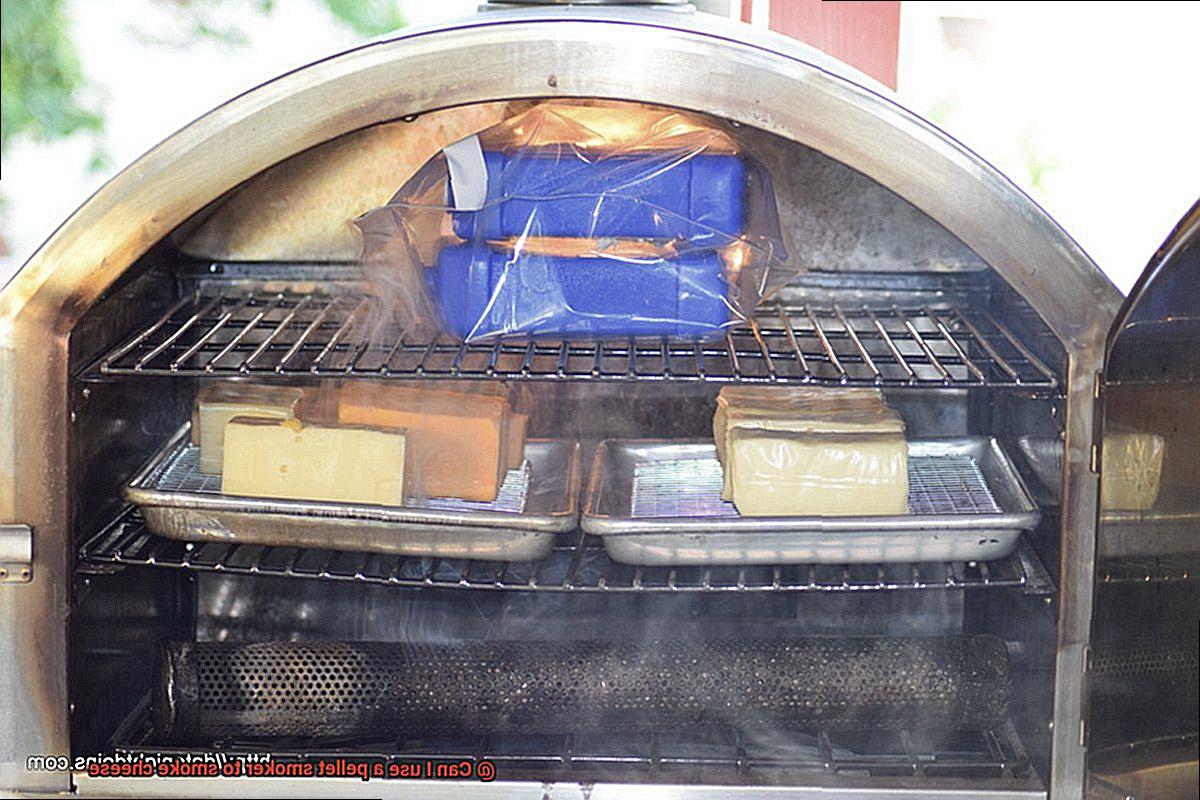
One of the most significant benefits of pellet smokers is their ability to maintain consistent temperatures. With digital controls, you can set the temperature at the ideal level, and the smoker will maintain it throughout the cooking process. This makes it perfect for smoking cheese, ribs, briskets, and other foods that require precise temperature control. Unlike traditional smokers, there’s no need for constant monitoring or adjustment.
Pellet smokers are also incredibly versatile. You can smoke, grill, bake, and roast with one appliance, making it a great investment for those who love outdoor cooking. They come in various sizes and designs, so you’re sure to find one that suits your needs best. Whether you’re feeding a large group or just cooking for yourself, a pellet smoker is an excellent choice.
Another benefit of pellet smokers is their convenience. They use wood pellets as fuel, which are easy to find and come in different flavors such as hickory, mesquite, and applewood. The hopper feeds these pellets into the firebox automatically, so there’s no need to constantly monitor or add fuel to the smoker. You can focus on other aspects of cooking or entertaining while your food cooks perfectly.
Finally, cleaning up after using a pellet smoker is a breeze. They produce very little ash compared to traditional smokers because the pellets burn cleanly and efficiently. You won’t have to spend hours cleaning up afterwards – just a quick wipe down will do the trick.
Concerns of Smoking Cheese with a Pellet Smoker
It’s important to understand the concerns that come with smoking cheese in a pellet smoker. With my expertise on this topic, let me guide you through some tips and advice to ensure your smoked cheese remains delicious and free of any mishaps.
First and foremost, temperature control is critical when smoking cheese in a pellet smoker. Cheese is delicate and easily melts, so maintaining a low and consistent temperature is crucial for preventing the cheese from becoming too soft or runny. Keep a close eye on the temperature gauge and make any necessary adjustments to maintain the optimal temperature.
Another crucial factor to consider is the type of wood pellets used in your smoker. Some woods like mesquite or hickory can be too overpowering for delicate cheeses, while mild woods like apple, alder, or cherry provide a subtle smoky flavor that complements the cheese perfectly. Experiment with different types of wood pellets to find the perfect match for your favorite cheeses.
Additionally, smoking cheese can take quite some time, often up to two hours or more, so patience is key. During this time, it’s essential to monitor the cheese carefully to prevent overcooking and excessive smokiness. Be sure to check on the cheese frequently to ensure it’s smoking at a steady pace.
Finally, proper storage is crucial for maintaining the quality of smoked cheese. After smoking the cheese, wrap it tightly in plastic wrap or wax paper before storing it in the refrigerator for up to two weeks. This will prevent mold growth and spoilage.
Temperature Control for Smoking Cheese
Smoking cheese is an art that requires precision and patience, but fear not. With the right knowledge and tools, you can create mouth-watering smoked cheese that will impress even the most discerning palates. And one of the essential elements of smoking cheese is temperature control.
Maintaining temperatures between 65°F and 85°F is crucial to prevent your cheese from melting and losing its shape and texture. However, using a pellet smoker can be tricky when it comes to temperature control. Pellet smokers are designed to maintain consistent temperatures, which works great for smoking meats but isn’t necessarily ideal for smoking cheese.
But don’t worry, I’ve got some tips to help you manage your pellet smoker’s temperature and smoke your cheese like a pro:
- Use an external thermometer: Relying on the built-in thermometer of your pellet smoker is not enough to ensure accurate temperature readings. Using an external thermometer probe placed near the cheese will give you a more precise reading.
- Use a cold smoking attachment: These attachments allow you to smoke at lower temperatures for longer periods of time, which is ideal for smoking cheese. They’re easy to attach to your pellet smoker and are available at most hardware stores.
- Consider using a tray of ice or a cold pack: Regulating the temperature inside your smoker can be challenging, especially on hot summer days. Adding a tray of ice or a cold pack can help keep temperatures low enough to prevent melting your cheese.
With these steps in mind, you’re ready to start smoking your cheese. But before you do, here are some additional tips to ensure perfect results:
- Use mild wood pellets like apple or maple to avoid overpowering the cheese’s flavor.
- Be patient during the process as smoking cheese takes a while to absorb the smoky flavor.
- Store your smoked cheese properly to prevent any mishaps, such as drying out or becoming too soft.
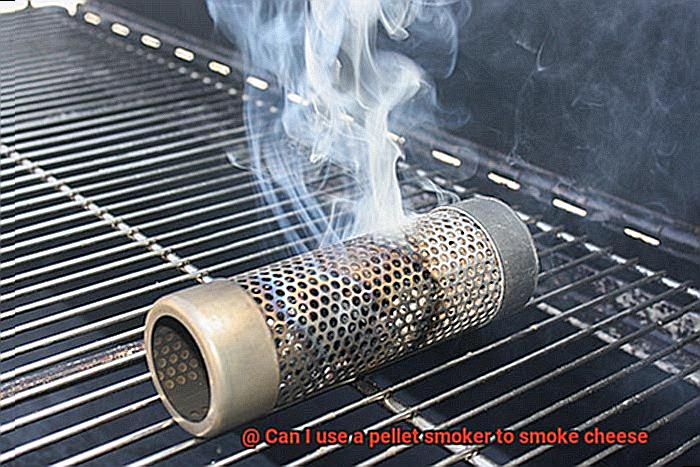
Types of Wood Pellets to Use for Smoking Cheese
Smoking cheese is a delicate art that requires skill and the right type of wood pellets. As an expert, I have researched and compiled a comprehensive guide to help you choose the best wood pellets for smoking cheese. Here are five sub-sections to consider:
Fruit Woods: Apple, Cherry, and Peach
Fruit woods are favored by many for their mild and sweet flavor profile that complements the delicate flavor of cheese. Applewood is an excellent choice for smoking cheddar, gouda, and mozzarella cheese, while cherry wood is perfect for brie and camembert. Peach wood is also a great option that can add a subtle sweetness to your cheese.
Nut Woods: Pecan, Almond, and Walnut
If you prefer a slightly stronger flavor than fruit woods, nut woods are an excellent choice. Pecan wood is perfect for blue cheese and goat cheese, while almond wood pairs well with smoked cheddar. Walnut wood gives a unique nutty flavor that complements most types of cheese.
Avoid Strong or Harsh Woods: Mesquite and Hickory
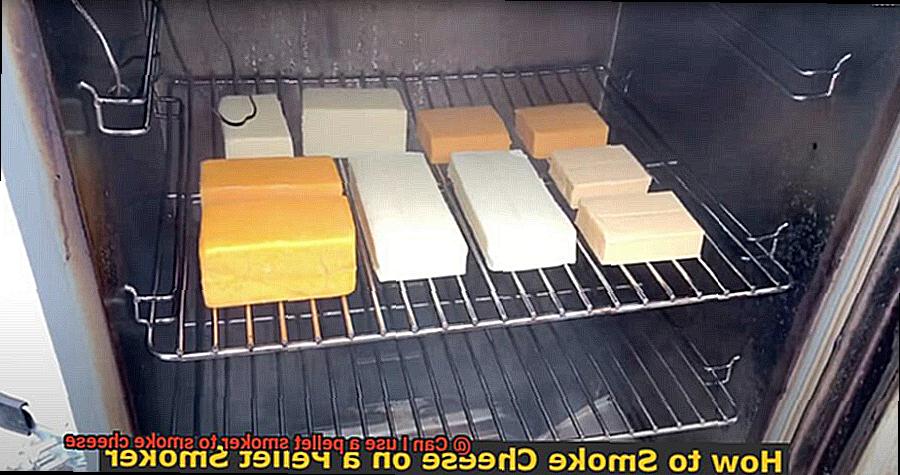
While mesquite and hickory are popular choices for smoking meats, they are not suitable for smoking cheese due to their strong and overpowering flavor profiles. These harsh woods can easily ruin the delicate flavor of your cheese and should be avoided.
Always Use Food-Grade Wood Pellets
Using food-grade wood pellets is essential when smoking cheese to ensure safety and quality. Some manufacturers produce wood pellets for heating purposes only, which may contain harmful chemicals or additives that can be unsafe for consumption. Always check the packaging to ensure that you are using food-grade wood pellets.
Experiment with Different Wood Pellets
The beauty of smoking cheese is that you can experiment with different types of wood pellets to create unique flavor profiles. Try mixing different types of woods to discover the perfect combination of flavors that suit your taste buds. Don’t be afraid to try new things and have fun with it.
Tips on How to Smoke Cheese in a Pellet Smoker
Smoking cheese in a pellet smoker can be a tricky process, but it’s not impossible with the right tips and techniques. To start, it’s crucial to select the appropriate type of cheese. Harder cheeses like cheddar, gouda, or pepper jack tend to be more resilient and can withstand the heat and smoke without melting too quickly. On the other hand, softer cheeses like brie or camembert may not hold up as well and could become too runny.
Once you’ve chosen your cheese, it’s recommended to let it sit at room temperature for about 30 minutes before placing it in the smoker. Preheating the smoker to a low temperature between 90-100°F is also important. This will allow the cheese to slowly absorb the smoke flavor without melting too quickly. It’s also best to use mild wood pellets like apple or cherry to avoid overpowering the cheese with a strong smoky flavor.
When it comes to smoking cheese, it’s crucial to use a cold smoke generator or pellet tube to keep the temperature low and prevent the cheese from melting. The generator or tube should be placed away from the cheese to allow for circulation of the smoke. Monitoring the temperature closely and making adjustments as necessary is also essential in preventing any unwanted melting.
The smoking process can take anywhere from 1-4 hours depending on how smoky you want your cheese. It’s crucial to check on the cheese periodically and rotate it if necessary to ensure even smoking. Once the smoking process is complete, let the cheese rest at room temperature for at least an hour before wrapping and refrigerating. This will allow the flavors to fully develop and settle.
How Long Does it Take to Smoke Cheese in a Pellet Smoker?
A smoky flavor may be just what you need. But, how long does it take to smoke cheese in a pellet smoker? As an expert on this topic, I’m here to provide you with everything you need to know.
The smoking time needed for cheese depends on several factors. The type of cheese you’re smoking plays a significant role in determining how long it will take to achieve the desired level of smokiness. Hard cheeses like cheddar or gouda require longer smoking times than softer cheeses like brie or camembert.
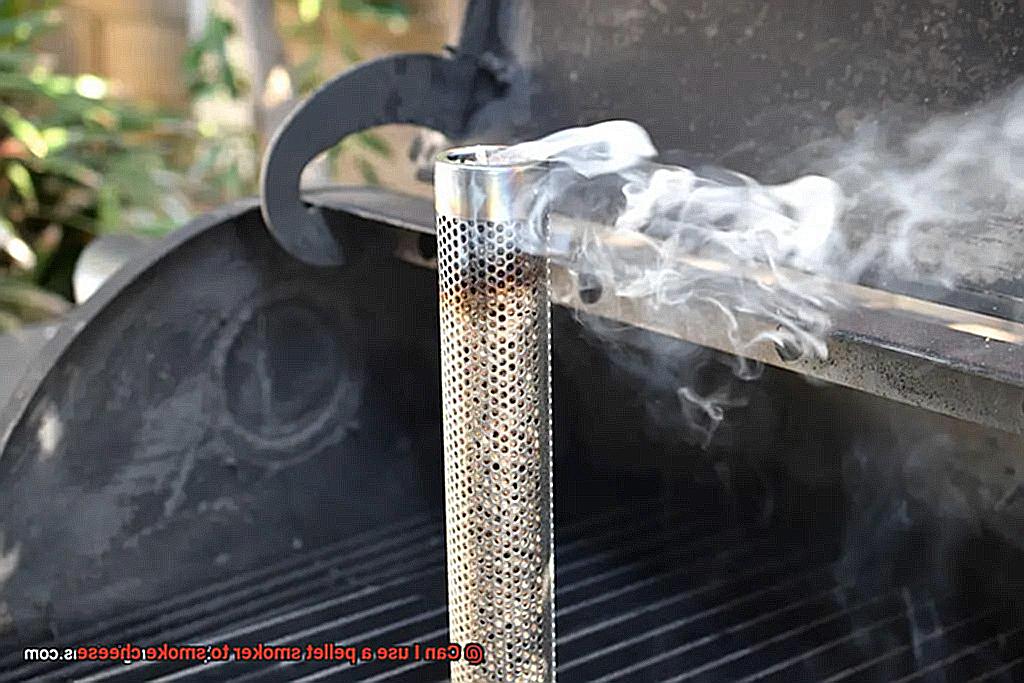
The temperature of your pellet smoker is another crucial factor that determines smoking time. Pellet smokers typically operate between 150°F to 275°F, but the ideal temperature for smoking cheese is around 85°F to 100°F. This lower temperature range ensures that the cheese doesn’t melt or lose its shape during the smoking process.
Your personal preference for the level of smokiness is also a factor in determining the length of time it takes to smoke cheese in a pellet smoker. Some people prefer a subtle smoky flavor, while others want a more intense taste. It’s up to you and your taste buds.
But, how long does it take? Typically, smoking cheese in a pellet smoker takes anywhere from 30 minutes to two hours. However, it’s essential to keep an eye on your cheese throughout the process to ensure that it’s not over-smoked or under-smoked.
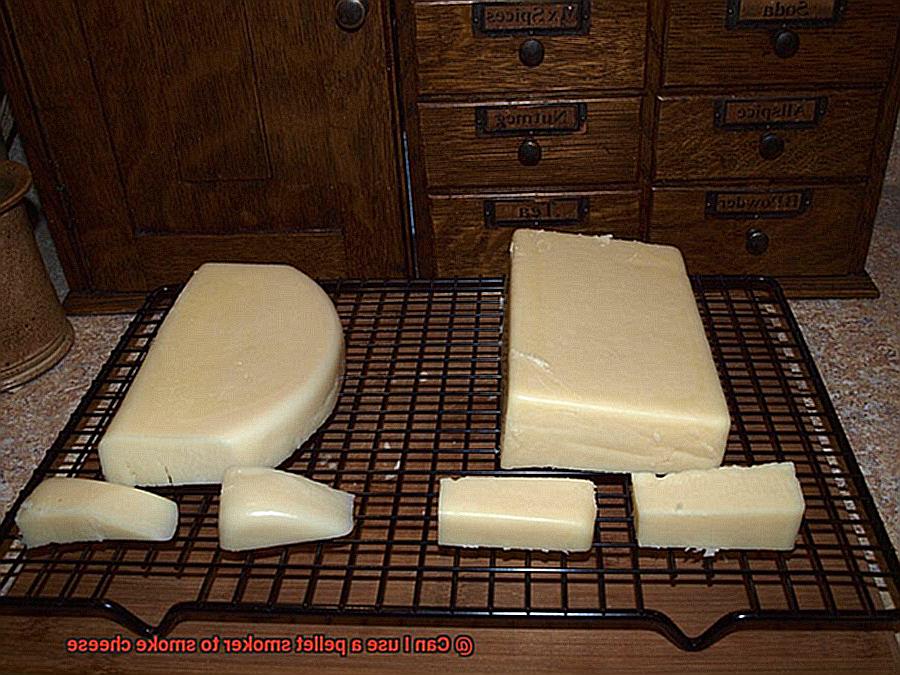
Over-smoking your cheese can result in a bitter taste, while under-smoking may not provide enough flavor. Therefore, monitoring the temperature of your pellet smoker and checking on your cheese regularly is essential.
To make sure that your cheese comes out perfectly, we suggest following these tips:
- Choose the right type of cheese for smoking
- Maintain a consistent temperature within the optimal range for smoking cheese
- Check on your cheese regularly to ensure it’s not over or under-smoked
- Adjust the smoking time according to your personal preference
MiZrGlh1mTg” >
Conclusion
In conclusion, smoking cheese with a pellet smoker is not only possible but also a fantastic way to elevate the taste of your dishes. Pellet smokers are renowned for their user-friendliness, consistent temperature control, and versatility, making them an optimal choice for smoking cheese.
However, there are some important factors to consider when smoking cheese with a pellet smoker. It’s crucial to maintain low and consistent temperatures and use mild wood pellets such as apple or cherry to prevent overpowering the delicate flavor of the cheese. Additionally, keeping a watchful eye on the cheese is essential to avoid overcooking or excessive smokiness.
Selecting the right type of cheese is also vital in achieving that perfect flavor. Harder cheeses like cheddar or gouda can withstand the heat and smoke without melting too quickly. Conversely, softer cheeses like brie or camembert may become too runny under high temperatures.
Lastly, experimenting with different types of wood pellets can create unique flavor profiles that cater to your taste buds. With these tips in mind, you’re now ready to smoke your cheese like a pro.

